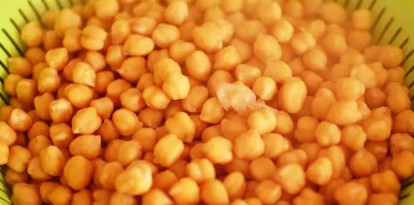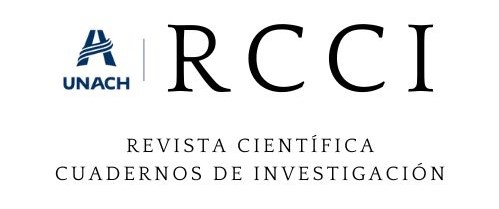Impacto del uso de aquafaba en la microencapsulación de vitamina D3 mediante gelificación iónica
DOI:
https://doi.org/10.59758/rcci.2025.3.e47Palabras clave:
Microencapsulación , Aquafaba, Gelificación iónica, Garbanzo, Alfa-INIAResumen
Introducción: La vitamina D, esencial para la salud humana, enfrenta problemas de estabilidad y biodisponibilidad cuando se incluye en matrices alimentarias. Este estudio explora la microencapsulación de vitamina D3 mediante gelificación iónica, utilizando emulsiones de alginato de sodio con agua o aquafaba como fase acuosa. Objetivo: Comparar el impacto del uso de agua y aquafaba en la eficiencia de encapsulación, capacidad de carga y rendimiento de las microcápsulas de vitamina D3. Métodos: Se produjeron microcápsulas mediante gelificación iónica, variando el tipo de fase acuosa y la proporción fase acuosa:oleosa (1:1 y 4:1). Se evaluaron características físicas, como tamaño y forma, y parámetros funcionales, como eficiencia de encapsulación (EE), capacidad de carga (LC) y rendimiento (Y). Resultados: La EE fue significativamente mayor con aquafaba (96%-97.7%) comparada con agua (84.7%-91%). Aunque la LC no varió significativamente (12%-14%), el rendimiento con aquafaba fue más consistente (>79%). Las microcápsulas basadas en aquafaba mostraron superficies lisas y uniformes, mientras que las de agua presentaron signos de desintegración en ciertos tratamientos. Conclusión: La aquafaba mejora la EE y el rendimiento, destacando su potencial como alternativa funcional al agua en la encapsulación. Se requieren estudios adicionales para profundizar en las interacciones proteicas y los mecanismos de liberación de vitamina D3 encapsulada.
Descargas
Referencias
Aguero, L.; Alpdagtas, S.; Ilhan, E.; Zaldivar-Silva, D. & Gunduz, O. (2021). Functional role of crosslinking in alginate scaffold for drug delivery and tissue engineering: A review. European Polymer Journal, 160, 110807. https://doi.org/10.1016/j.eurpolymj.2021.110807
Aguilar-Shea, A. L. (2021). Vitamin D, the natural way. Clinical Nutrition ESPEN, 41, 10-12. https://doi.org/10.1016/j.clnesp.2020.12.001
Aguirre-Zazzali, P. J. (2011). Preparación de micropartículas de quitosano para microencapsulación de biomoléculas. [Memoria para optar al Título Profesional de Médico Veterinario, Universidad de Chile]. https://n9.cl/eudzuk
Raus, A. R.; Wan N., W. M. F. & Nasaruddin, R. R. (2021). Alginate and alginate composites for biomedical applications. Asian Journal of Pharmaceutical Sciences, 16(3), 280-306. https://doi.org/10.1016/j.ajps.2020.10.001
Almeida, A. P.; Rodríguez-Rojo, S.; Serra, A. T.; Vila-Real, H.; Simplicio, A. L.; Delgadilho, I.; Beirão Da Costa, S.; Beirão Da Costa, L.; Nogueira, I. D. & Duarte, C. M. M. (2013). Microencapsulation of oregano essential oil in starch-based materials using supercritical fluid technology. Innovative Food Science and Emerging Technologies, 20, 140-145. https://doi.org/10.1016/j.ifset.2013.07.009
Arazo-Rusindo, M. C.; Zúñiga, R. N.; Cortés-Segovia, P.; Benavides-Valenzuela, S.; Pérez-Bravo, F.; Castillo-Valenzuela, O. & Mariotti-Celis, M. S. (2022). Nutritional Status and Serum Levels of Micronutrients in an Elderly Group Who Participate in the Program for Complementary Food in Older People (PACAM) from the Metropolitan Region, Santiago de Chile. Nutrients, 14(1), 3. https://doi.org/10.3390/nu14010003
Ashimova, A.; Yegorov, S.; Negmetzhanov, B. & Hortelano, G. (2019). Cell Encapsulation Within Alginate Microcapsules: Immunological Challenges and Outlook. Frontiers in Bioengineering and Biotechnology, 7, 380. https://doi.org/10.3389/fbioe.2019.00380
Avramenko, N. A.; Low, N. H. & Nickerson, M. T. (2013). The effects of limited enzymatic hydrolysis on the physicochemical and emulsifying properties of a lentil protein isolate. Food Research International, 51(1), 162-169. https://doi.org/10.1016/j.foodres.2012.11.020
Barreto-Santos, M.; de Carvalho, C. W. P. & García-Rojas, E. E. (2021). Microencapsulation of vitamin D3 by complex coacervation using carboxymethyl tara gum (Caesalpinia spinosa) and gelatin A. Food Chemistry, 343, 128529. https://doi.org/10.1016/j.foodchem.2020.128529
Barros-Silverio, G.; Sakanaka, L. S.; Alvim, I. D.; Shirai, M. A. & Grosso, C. R. F. (2018). Production and characterization of alginate microparticles obtained by ionic gelation and electrostatic adsorption of concentrated soy protein. Ciência Rural, 48(12). https://doi.org/10.1590/0103-8478cr20180637
Basu, S.; Banerjee, D.; Chowdhury, R. & Bhattacharya, P. (2018). Controlled release of microencapsulated probiotics in food matrix. Journal of Food Engineering, 238, 61-69. https://doi.org/10.1016/j.jfoodeng.2018.06.005
Benavides, S.; Cortés, P.; Parada, J. & Franco, W. (2016). Development of alginate microspheres containing thyme essential oil using ionic gelation. Food Chemistry, 204, 77-83. https://doi.org/10.1016/j.foodchem.2016.02.104
Benavides, S.; Mariotti-Celis, M. S.; Paredes, M. J. C.; Parada, J. A. & Franco, W. V. (2021). Thyme essential oil loaded microspheres for fish fungal infection: Microstructure, in vitro dynamic release and antifungal activity. Journal of Microencapsulation, 38(1), 11-21. https://doi.org/10.1080/02652048.2020.1836055
Buhl, T. F.; Christensen, C. H. & Hammershøj, M. (2019). Aquafaba as an egg white substitute in food foams and emulsions: Protein composition and functional behavior. Food Hydrocolloids, 96, 354-364. https://doi.org/10.1016/j.foodhyd.2019.05.041
Cáceres, L.; Velasco, G.; Dagnino, E. & Chamorro, E. (2020). Microencapsulation of grapefruit oil with sodium alginate by gelation and ionic extrusion: Optimization and modeling of crosslinking and study of controlled release kinetics. Revista Tecnología y Ciencia, 39, 41-61. https://doi.org/10.33414/rtyc.39.41-61.2020
Can-Karaca, A.; Low, N. H. & Nickerson, M. T. (2015). Potential use of plant proteins in the microencapsulation of lipophilic materials in foods. Trends in Food Science & Technology, 42(1), 5-12. https://doi.org/10.1016/j.tifs.2014.11.002
Chan, E.-S. (2011). Preparation of Ca-alginate beads containing high oil content: Influence of process variables on encapsulation efficiency and bead properties. Carbohydrate Polymers, 84(4), 1267-1275. https://doi.org/10.1016/j.carbpol.2011.01.015
Chatterjee, D. & Bhattacharjee, P. (2015). Encapsulation of colour from peels of eggplant in calcium alginate matrix. Nutrafoods, 14(2), 87-96. https://doi.org/10.1007/s13749-015-0001-5
da Silva, S. Â. D.; Batista, L. da S. P.; Diniz, D. S.; Nascimento, S. S. da C.; Morais, N. S.; de Assis, C. F.; Passos, T. S. & de Sousa Júnior, F. C. (2023). Microencapsulation of Probiotics by Oil-in-Water Emulsification Technique Improves Cell Viability under Different Storage Conditions. Foods, 12(2), Article 2. https://doi.org/10.3390/foods12020252
da Silva, T. B. V.; de Oliveira, A.; Moreira, T. F. M.; da Silva, K. C.; Zanin, R. C.; Bona, E.; Gonçalves, O. H.; Shirai, M. A.; Peron, A. P. & Leimann, F. V. (2021). Analytical validation of an ultraviolet–visible procedure for determining vitamin D3 in vitamin D3-loaded microparticles and toxigenetic studies for incorporation into food. Food Chemistry, 360, 129979. https://doi.org/10.1016/j.foodchem.2021.129979
de Oliveira, W. Q.; Wurlitzer, N. J.; Araújo, A. W. de O.; Comunian, T. A.; Bastos, M. do S. R.; de Oliveira, A. L.; Magalhães, H. C. R.; Ribeiro, H. L.; de Figueiredo, R. W. & de Sousa, P. H. M. (2020). Complex coacervates of cashew gum and gelatin as carriers of green coffee oil: The effect of microcapsule application on the rheological and sensorial quality of a fruit juice. Food Research International, 131(October 2019). https://doi.org/10.1016/j.foodres.2020.109047
Dehkordi, S. S.; Alemzadeh, I.; Vaziri, A. S. & Vossoughi, A. (2020a). Optimization of Alginate-Whey Protein Isolate Microcapsules for Survivability and Release Behavior of Probiotic Bacteria. Applied Biochemistry and Biotechnology, 190(1), 182-196. https://doi.org/10.1007/s12010-019-03071-5
Dehkordi, S. S.; Alemzadeh, I.; Vaziri, A. S. & Vossoughi, A. (2020b). Optimization of Alginate-Whey Protein Isolate Microcapsules for Survivability and Release Behavior of Probiotic Bacteria. Applied Biochemistry and Biotechnology, 190(1), 182-196. https://doi.org/10.1007/s12010-019-03071-5
Donhowe, E. G.; Flores, F. P.; Kerr, W. L.; Wicker, L. & Kong, F. (2014). Characterization and in vitro bioavailability of β-carotene: Effects of microencapsulation method and food matrix. LWT - Food Science and Technology, 57(1), 42-48. https://doi.org/10.1016/j.lwt.2013.12.037
Duran, M.; Serrano, A.; Nikulin, A.; Dauvergne, J.-L.; Derzsi, L. & Palomo del Barrio, E. (2022). Microcapsule production by droplet microfluidics: A review from the material science approach. Materials & Design, 223, 111230. https://doi.org/10.1016/j.matdes.2022.111230
Emadzadeh, B.; Ghorani, B.; Naji-Tabasi, S.; Charpashlo, E. & Molaveisi, M. (2021). Fate of β-cyclodextrin-sugar beet pectin microcapsules containing garlic essential oil in an acidic food beverage. Food Bioscience, 42, 101029. https://doi.org/10.1016/j.fbio.2021.101029
Farahmand, A.; Emadzadeh, B.; Ghorani, B. & Poncelet, D. (2021). A comprehensive parametric study for understanding the combined millifluidic and dripping encapsulation process and characterisation of oil-loaded capsules. Journal of Microencapsulation, 38(7-8), 507-521. https://doi.org/10.1080/02652048.2021.1983053
Ferrandiz, M.; López, A.; Franco, E.; García‐García, D.; Fenollar, D. & Balart, R. (2017). Development and characterization of bioactive alginate microcapsules with cedarwood essential oil. Flavour and Fragrance Journal, 32(3), 184-190. https://doi.org/10.1002/ffj.3373
Hasanvand, E.; Fathi, M.; Bassiri, A.; Javanmard, M. & Abbaszadeh, R. (2015). Novel starch based nanocarrier for Vitamin D fortification of milk: Production and characterization. En Food and Bioproducts Processing (Vol. 96). Institution of Chemical Engineers. https://doi.org/10.1016/j.fbp.2015.09.007
Huan, L.; Xueyi, H.; Lei, L.; Xingyue, M.; Yun, F. & Yongmei, X. (2022). Micron and nano hybrid ufasomes from conjugated linoleic acid, their vesiculation and encapsulation of ginsenoside Rg3. Journal of the Science of Food and Agriculture, 102(10), 4140-4150. https://doi.org/10.1002/jsfa.11763
Hurtado, A.; Aljabali, A. A. A.; Mishra, V.; Tambuwala, M. M. & Serrano-Aroca, Á. (2022). Alginate: Enhancement Strategies for Advanced Applications. International Journal of Molecular Sciences, 23(9), Article 9. https://doi.org/10.3390/ijms23094486
Irazoqui, A. P.; Heim, N. B.; Boland, R. L. & Buitrago, C. G. (2015). 1α,25 dihydroxi-vitamin D3 modulates CDK4 and CDK6 expression and localization. Biochemical and Biophysical Research Communications, 459(1), 137-142. https://doi.org/10.1016/j.bbrc.2015.02.083
Jafari, S. M.; Vakili, S. & Dehnad, D. (2019). Production of a Functional Yogurt Powder Fortified with Nanoliposomal Vitamin D Through Spray Drying. Food and Bioprocess Technology, 12(7), 1220-1231. https://doi.org/10.1007/s11947-019-02289-9
Jannasari, N.; Fathi, M.; Moshtaghian, S. J. & Abbaspourrad, A. (2019). Microencapsulation of vitamin D using gelatin and cress seed mucilage: Production, characterization and in vivo study. International Journal of Biological Macromolecules, 129, 972-979. https://doi.org/10.1016/j.ijbiomac.2019.02.096
Jiménez-Villeda, B. E.; Falfán-Cortés, R. N.; Rangel-Vargas, E.; Santos-López, E. M.; Gómez-Aldapa, C. A.; Torres-Vitela, M. R.; Villarruel-López, A. & Castro-Rosas, J. (2023). Synbiotic Encapsulation: A Trend towards Increasing Viability and Probiotic Effect. Journal of Food Processing and Preservation, 2023, e7057462. https://doi.org/10.1155/2023/7057462
Juzeniene, A. & Moan, J. (2012). Beneficial effects of UV radiation other than via vitamin D production. Dermato-endocrinology, 4(2), 109-117. https://doi.org/10.4161/derm.20013
Kamaldeen, O. S.; Ariahu, C. C. & Yusufu, M. I. (2020). Application of soy protein isolate and cassava starch based film solutions as matrix for ionic encapsulation of carrot powders. Journal of Food Science and Technology, 57(11), 4171-4181. https://doi.org/10.1007/s13197-020-04455-w
Kim, W.; Wang, Y.; Vongsvivut, J.; Ye, Q. & Selomulya, C. (2023). On surface composition and stability of β-carotene microcapsules comprising pea/whey protein complexes by synchrotron-FTIR microspectroscopy. Food Chemistry, 426, 136565. https://doi.org/10.1016/j.foodchem.2023.136565
Kothale, D.; Verma, U.; Dewangan, N.; Jana, P.; Jain, A. & Jain, D. (2020). Alginate as Promising Natural Polymer for Pharmaceutical, Food, and Biomedical Applications. Current Drug Delivery, 17(9), 755-775. https://doi.org/10.2174/1567201817666200810110226
Lavelli, V.; D’Incecco, P. & Pellegrino, L. (2021). Vitamin D Incorporation in Foods: Formulation Strategies, Stability, and Bioaccessibility as Affected by the Food Matrix. Foods, 10(9), Article 9. https://doi.org/10.3390/foods10091989
Li, L.; Song, L.; Hua, T.; Wai Man, A. & Wong, K. S. (2013). Characteristics of weaving parameters in microcapsule fabrics and their influence on loading capability. Textile Research Journal, 83(2), 113-121. https://doi.org/10.1177/0040517512454184
Liu, Z.-M.; Yang, Y.; Du, Y. & Pang, Y. (2017). Advances in Droplet-Based Microfluidic Technology and Its Applications. Chinese Journal of Analytical Chemistry, 45(2), 282-296. https://doi.org/10.1016/S1872-2040(17)60994-0
Luo, Y.; Teng, Z. & Wang, Q. (2012). Development of Zein Nanoparticles Coated with Carboxymethyl Chitosan for Encapsulation and Controlled Release of Vitamin D3. Journal of Agricultural and Food Chemistry, 60(3), 836-843. https://doi.org/10.1021/jf204194z
Maurya, V. K.; Bashir, K. & Aggarwal, M. (2020). Vitamin D microencapsulation and fortification: Trends and technologies. The Journal of Steroid Biochemistry and Molecular Biology, 196, 105489. https://doi.org/10.1016/j.jsbmb.2019.105489
McCourt, A.; McNulty, B. A.; Walton, J. & O’Sullivan, A. (2020). Efficacy and safety of food fortification to improve vitamin D intakes of older adults. Nutrition, 75-76, 110767. https://doi.org/10.1016/j.nut.2020.110767
Md Sai’aan, N. H.; Soon, C. F.; Tee, K. S.; Ahmad, M. K.; Youseffi, M. & Khagani, S. A. (2016). Characterisation of encapsulated cells in calcium alginate microcapsules. 2016 IEEE EMBS Conference on Biomedical Engineering and Sciences (IECBES), 611-616. https://doi.org/10.1109/IECBES.2016.7843522
Meurer, M. C.; De Souza, D. & Ferreira Marczak, L. D. (2020). Effects of ultrasound on technological properties of chickpea cooking water (aquafaba). Journal of Food Engineering, 265, 109688. https://doi.org/10.1016/j.jfoodeng.2019.109688
Moutkane, M.; Benyahia, L. & Nicolai, T. (2023). Stable protein microcapsules by crosslinking protein particles in water in water emulsions. Colloids and Surfaces A: Physicochemical and Engineering Aspects, 656, 130353. https://doi.org/10.1016/j.colsurfa.2022.130353
Mustafa, R.; He, Y.; Shim, Y. Y. & Reaney, M. J. T. (2018). Aquafaba, wastewater from chickpea canning, functions as an egg replacer in sponge cake. International Journal of Food Science & Technology, 53(10), 2247-2255. https://doi.org/10.1111/ijfs.13813
Nesterenko, A.; Alric, I.; Silvestre, F. & Durrieu, V. (2014). Comparative study of encapsulation of vitamins with native and modified soy protein. Food Hydrocolloids, 38, 172-179. https://doi.org/10.1016/j.foodhyd.2013.12.011
Ortiz-Romero, N.; Ochoa-Martínez, L. A.; González-Herrera, S. M.; Rutiaga-Quiñones, O. M. & Gallegos-Infante, J. A. (2021). Avances en las investigaciones sobre la encapsulación mediante gelación iónica: Una revisión sistemática. TecnoLógicas, 24(52), Article 52. https://doi.org/10.22430/22565337.1962
Pasin, L.; Azón, G. & Garriga, M. (2012). Microencapsulación con alginato en alimentos. Técnicas y aplicaciones. 3(1), 130-151. http://www.rvcta.org
Pérez-Castrillón, J. L.; Dueñas-Laita, A.; Brandi, M. L.; Jódar, E.; Del Pino-Montes, J.; Quesada-Gómez, J. M.; Cereto Castro, F.; Gómez-Alonso, C.; Gallego López, L.; Olmos Martínez, J. M.; Alhambra Expósito, M. R.; Galarraga, B.; González-Macías, J.; Bouillon, R.; Hernández-Herrero, G.; Fernández-Hernando, N.; Arranz-Gutiérrez, P. & Chinchilla, S. P. (2021). Calcifediol is superior to cholecalciferol in improving vitamin D status in postmenopausal women: A randomized trial. Journal of Bone and Mineral Research: The Official Journal of the American Society for Bone and Mineral Research, 36(10), 1967-1978. https://doi.org/10.1002/jbmr.4387
Prabhakar, A. K.; Potroz, M. G.; Tan, E.-L.; Jung, H.; Park, J. H. & Cho, N.-J. (2018). Macromolecular Microencapsulation Using Pine Pollen: Loading Optimization and Controlled Release with Natural Materials. ACS Applied Materials & Interfaces, 10(34), 28428-28439. https://doi.org/10.1021/ACSAMI.8B09952
Rahim, S. N. A.; Sulaiman, A.; Hamzah, F.; Hamid, K. H. K.; Rodhi, M. N. M.; Musa, M. & Edama, N. A. (2013). Enzymes Encapsulation within Calcium Alginate-clay Beads: Characterization and Application for Cassava Slurry Saccharification. Procedia Engineering, 68, 411-417. https://doi.org/10.1016/j.proeng.2013.12.200
Rendón-Moras, A. (2018). Relacion de la vitamina D y Depresion [Universidad de las Américas]. http://catarina.udlap.mx/u_dl_a/tales/documentos/lmr/rendon_moras_a/
Ribeiro, C.; Borges, J.; Costa, A. M. S.; Gaspar, V. M.; Bermudez, V. D. Z. & Mano, J. F. (2018). Preparation of Well-Dispersed Chitosan/Alginate Hollow Multilayered Microcapsules for Enhanced Cellular Internalization. Molecules, 23(3), Article 3. https://doi.org/10.3390/molecules23030625
Ríos-Aguirre, S. & Gil Garzón, M. A. (2021). Microencapsulación por secado por aspersión de compuestos bioactivos en diversas matrices: Una revisión. TecnoLógicas, 51, 1836. https://dialnet.unirioja.es/servlet/articulo?codigo=9518022
Rodríguez-Huertas, J.; Rodríguez Lara, A.; González Acevedo, O.; Mesa, M. D.; Rodríguez Huertas, J.; Rodríguez Lara, A.; González Acevedo, O. & Mesa, M. D. (2019). Leche y productos lácteos como vehículos de calcio y vitamina D: Papel de las leches enriquecidas. Nutrición Hospitalaria, 36(4), 962-973. https://doi.org/10.20960/nh.02570
Shim, Y. Y.; Mustafa, R.; Shen, J.; Ratanapariyanuch, K. & Reaney, M. J. T. (2018). Composition and properties of aquafaba: Water recovered from commercially canned chickpeas. Journal of Visualized Experiments, 2018(132), 1-14. https://doi.org/10.3791/56305
Souza, S. V. S.; Borges, N. & Vieira, E. F. (2022). Vitamin d-fortified bread: Systematic review of fortification approaches and clinical studies. Food Chemistry, 372, 131325. https://doi.org/10.1016/j.foodchem.2021.131325
Troncoso-Pantoja, C.; Concha-Cisternas, Y.; Leiva-Ordoñez, A. M.; Martínez-Sanguinetti, M. A.; Petermann-Rocha, F.; Díaz-Martínez, X.; Martorell, M.; Nazar, G.; Ulloa, N.; Cigarroa-Cuevas, I.; Albala, C., Márquez, C.; Lera, L.; Celis-Morales, C.; Troncoso-Pantoja, C.; Concha-Cisternas, Y.; Leiva-Ordoñez, A. M.; Martínez-Sanguinetti, M. A.; Petermann-Rocha, F. & Celis-Morales, C. (2020). Prevalencia de fragilidad en personas mayores de Chile: Resultados de la Encuesta Nacional de Salud 2016-2017. Revista médica de Chile, 148(10), 1418-1426. https://doi.org/10.4067/S0034-98872020001001418
Uzcátegui D-S., L. (2012). Vitamina D: Más allá de sus efectos esqueléticos. Revista Venezolana de Endocrinología y Metabolismo, 10(1), 1-4. http://ve.scielo.org/scielo.php?script=sci_abstract&pid=S1690-31102012000100001&lng=es&nrm=iso&tlng=es
Vallejo-Castillo, V.; Rodríguez-Stouvenel, A.; Martínez, R. & Bernal, C. (2020). Development of alginate-pectin microcapsules by the extrusion for encapsulation and controlled release of polyphenols from papaya (Carica papaya L.). Journal of Food Biochemistry, 44(9), e13331. https://doi.org/10.1111/jfbc.13331
Wang, B.; Vongsvivut, J.; Adhikari, B. & Barrow, C. J. (2015). Microencapsulation of tuna oil fortified with the multiple lipophilic ingredients vitamins A, D3, E, K2, curcumin and coenzyme Q10. Journal of Functional Foods, 19, 893-901. https://doi.org/10.1016/j.jff.2015.03.027
Wei, L.; Wong, D.; Jeoh, T. & Marco, M. L. (2024). Intestinal delivery of encapsulated bacteriocin peptides in cross-linked alginate microcapsules. Food Research International, 188, 114473. https://doi.org/10.1016/j.foodres.2024.114473
Włodarczyk, K.; Zienkiewicz, A. & Szydłowska-Czerniak, A. (2022). Radical Scavenging Activity and Physicochemical Properties of Aquafaba-Based Mayonnaises and Their Functional Ingredients. Foods, 11(8), 1129. https://doi.org/10.3390/foods11081129
Xue, Y.; Li, C.; Liu, J.; Tan, J.; Yin, H.; Yao, L. & Zhang, Q. (2021). Microcapsule-type stabilizers with adjustable wettability and their application in Pickering emulsion. Journal of Materials Science, 56(31), 17527-17541. https://doi.org/10.1007/s10853-021-06367-2
Yeh, E. B.; Barbano, D. M. & Drake, M. (2017). Vitamin Fortification of Fluid Milk. Journal of Food Science, 82(4), 856-864. https://doi.org/10.1111/1750-3841.13648
Zhao, W.; Zhang, B.; Liang, W.; Liu, X.; Zheng, J.; Ge, X.; Shen, H.; Lu, Y.; Zhang, X.; Sun, Z.; Ospankulova, G. & Li, W. (2022). Lutein encapsulated in whey protein and citric acid potato starch ester: Construction and characterization of microcapsules. International Journal of Biological Macromolecules, 220, 1-12. https://doi.org/10.1016/j.ijbiomac.2022.08.068

Publicado
Número
Sección
Categorías
Licencia
Derechos de autor 2025 Marcela Jarpa Parra, Sebastián J. Flores-Mamani, Sergio F. Benavides-Valenzuela (Autor/a)

Esta obra está bajo una licencia internacional Creative Commons Atribución-NoComercial-CompartirIgual 4.0.






